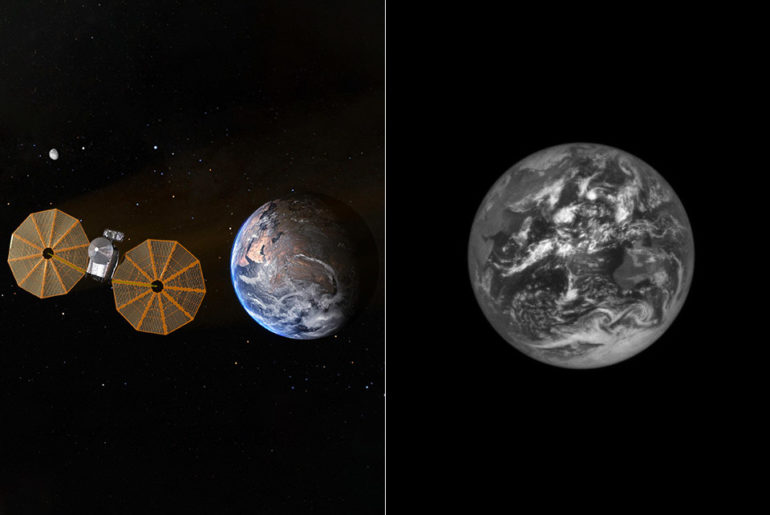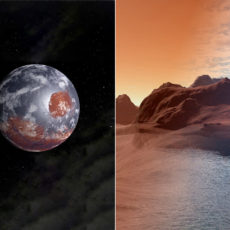
NASA’s Lucy spacecraft captured a mesmerizing image of the Earth from space on Oct 15, 2022 from 380,000-miles away as part of an instrument calibration sequence. Lucy marks the first mission to explore the Jupiter Trojan asteroids, or an ancient population of asteroid “fossils” orbiting the Sun at approximately the same distance as Jupiter.

Getting to these asteroids requires the spacecraft to use three Earth gravity assists to boost itself. During the latest gravity assist, it also captured this image of the Earth and the Moon from a distance of 890,000 miles using its Terminal Tracking Camera (T2CAM) system, two identical cameras designed to track the asteroids during Lucy’s high-speed encounters. However, it may be a while until we install space bubbles to protect Earth from solar radiation.
- LEGO NASA Space Set - This adult LEGO set features the Space Shuttle Discovery and the Hubble Space Telescope from NASA’s 1990 STS-31 mission,...
- Solar System Exploration - Unlock the mysteries of our solar system with this engaging 2,354-piece project, packed with authentic details and...
- Shuttle Features Galore - The space shuttle model has an opening payload bay, retractable landing gear, opening cockpit, moving elevons, space arm,...

The image was taken with Lucy’s Terminal Tracking Camera (T2CAM) system, a pair of identical cameras that are responsible for tracking the asteroids during Lucy’s high speed encounters. The T2CAM system was designed, built and tested by Malin Space Science Systems; Lockheed Martin Integrated the T2CAMs onto the Lucy spacecraft and operates them,” said NASA.







